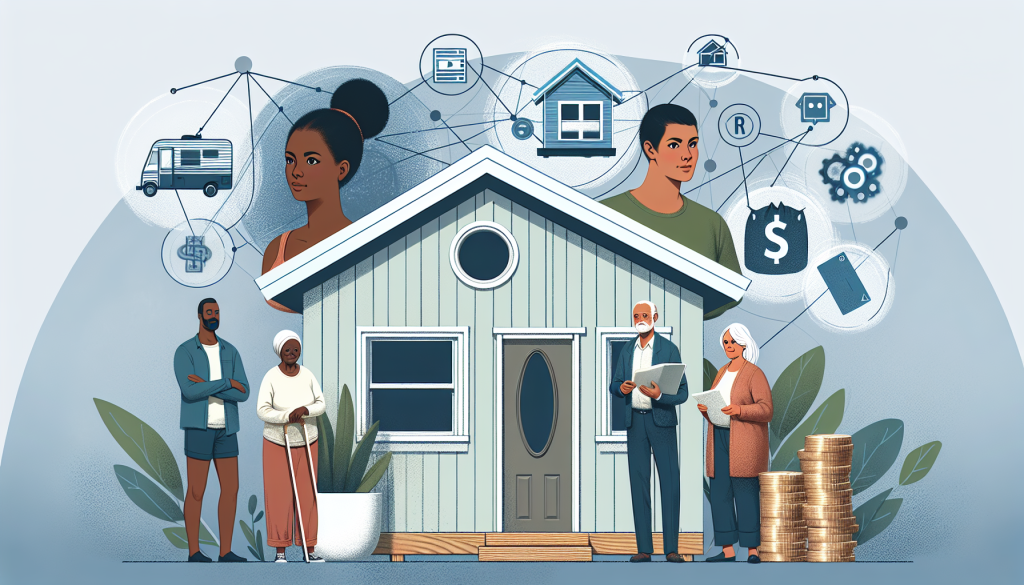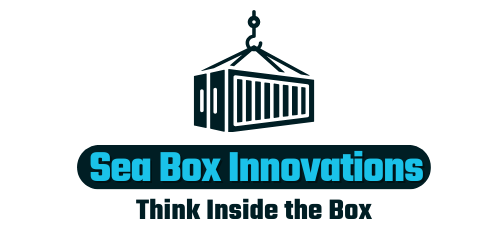So you’re considering the idea of living in a tiny home, but the big question on your mind is: is it hard to finance a tiny home? In this article, we will explore the various options and challenges that come with financing a tiny home. From traditional loans to alternative methods, you’ll discover the possibilities that can help turn your dream of owning a tiny home into a reality. Whether you’re looking for a cozy retreat or an eco-friendly dwelling, we’ve got you covered when it comes to navigating the world of tiny home financing.

Factors to Consider When Financing a Tiny Home
Cost of the Tiny Home
When considering financing options for a tiny home, the first factor to consider is the cost of the home itself. Tiny homes come in all shapes and sizes, and the cost can vary greatly depending on factors such as size, materials, and location. It’s important to have a clear understanding of how much you can afford to spend on a tiny home before exploring financing options.
Type of Financing
There are several types of financing available for tiny homes, and it’s important to understand the pros and cons of each option. Personal savings, traditional mortgages, personal loans, RV loans, home equity loans, credit union loans, government programs, crowdfunding, seller financing, and peer-to-peer lending are all potential options to explore. Each option has its own requirements, interest rates, and terms, so it’s essential to choose the one that best suits your financial situation and goals.
Credit Score and Financial History
Your credit score and financial history play a significant role in determining your eligibility for financing a tiny home. Lenders will review your credit score to assess your creditworthiness and determine the interest rates and terms they are willing to offer you. It’s essential to have a good credit score and a clean financial history to increase your chances of obtaining favorable financing options.
Interest Rates and Terms
Interest rates and terms vary depending on the type of financing you choose for your tiny home. Traditional mortgages typically offer lower interest rates and longer repayment terms compared to personal loans or RV loans. It’s important to carefully consider the interest rates and terms offered by different lenders to ensure that you choose an option that is both affordable and feasible for your budget.
Down Payment
Most financing options for tiny homes require a down payment. The down payment is a percentage of the total cost of the home that you pay upfront, reducing the amount financed. The down payment amount will depend on the lender and the type of financing you choose. Saving up for a down payment is an important aspect of financing a tiny home, so it’s crucial to factor this into your financial planning.
Options for Financing a Tiny Home
Personal Savings
Using personal savings to finance a tiny home is often the most straightforward and preferred option. By saving up enough money, you can avoid financing costs and pay for your home outright. However, this option may not be feasible for everyone depending on their financial situation and the cost of the tiny home.
Traditional Mortgage
A traditional mortgage is a common option for financing a tiny home. This involves borrowing money from a lender to purchase the home, and you then make monthly mortgage payments. Traditional mortgages typically offer competitive interest rates and longer repayment terms, making them an attractive option for those who meet the requirements.
Personal Loan
Personal loans are another option for financing a tiny home. These loans are typically unsecured and have shorter repayment terms compared to mortgages. Personal loans may have higher interest rates, but they can provide a quicker and more flexible financing solution for those who need it.
RV Loan
If your tiny home is on wheels and qualifies as an RV, you may be eligible for an RV loan. RV loans are specifically designed for recreational vehicles and can be a suitable option for financing a mobile tiny home. These loans often have favorable interest rates and terms.
Home Equity Loan
If you already own a home or have significant equity in one, a home equity loan may be an option to finance your tiny home. A home equity loan allows you to borrow against the equity in your property, providing access to funds for purchasing or building your tiny home. However, this option should be carefully considered, as it puts your existing property at risk if you fail to repay the loan.
Credit Union Loan
Credit unions offer alternative financing options for tiny homes. They often have more flexibility in their lending criteria and may offer competitive interest rates. Joining a credit union and exploring their loan options can be a beneficial avenue for financing your tiny home.
Government Programs
Some government programs offer assistance and incentives for financing a tiny home. These programs may provide grants, subsidies, or tax credits to help offset the cost of purchasing or building a tiny home. Researching the available government programs in your area can be an excellent way to explore potential financing options.
Crowdfunding
Crowdfunding has gained popularity as a means of financing various projects, including tiny homes. Platforms like Kickstarter or GoFundMe allow individuals to raise funds from a large number of contributors. Crowdfunding can be a viable option if you have a compelling story or unique concept for your tiny home that resonates with a broad audience.
Seller Financing
In some cases, the seller of a tiny home may be willing to offer financing directly. Seller financing involves the seller acting as the lender and allowing you to make payments directly to them over time. This option can provide more flexibility and may be easier to qualify for compared to traditional lenders.
Peer-to-Peer Lending
Peer-to-peer lending platforms connect borrowers directly with individual lenders. These online platforms provide an alternative to traditional lenders and can offer more flexible financing options for tiny homes. Peer-to-peer lending can be a suitable choice if you have difficulty qualifying for a loan through traditional channels.
Challenges of Financing a Tiny Home
Limited Financing Options
One of the primary challenges of financing a tiny home is the limited number of financing options available. Unlike traditional homes, which have well-established mortgage options, tiny homes often fall into a gray area when it comes to financing. This limited availability can make it more challenging to find affordable and suitable financing for your tiny home.
Lack of Collateral
Tiny homes, especially those on wheels, may not meet the requirements for conventional collateral. Many lenders require real estate as collateral, which can pose a challenge when financing a tiny home. The lack of collateral can make it more difficult to secure traditional financing options and may result in higher interest rates or stricter lending criteria.
Higher Interest Rates
Due to the unique nature of tiny homes and the limited financing options, lenders may view them as higher-risk investments. This perception can lead to higher interest rates compared to traditional mortgages or loans. It’s essential to factor in the potential impact of higher interest rates on your overall budget and financial plans.
Credit Requirements
Lenders typically have specific credit requirements for financing a tiny home. While these requirements may vary from lender to lender, having a good credit score is generally beneficial when seeking financing. Poor credit history can limit your options and result in less favorable interest rates and terms.
Difficulty in Appraisal
Tiny homes often lack standard valuation methods used for traditional homes. Appraising a tiny home’s value can be challenging due to their unique characteristics and customization. This difficulty in appraisal can impact the financing process, as lenders may have difficulty determining the home’s true value and adjusting their loan terms accordingly.
Insurance Challenges
Insuring a tiny home can present challenges due to their unconventional nature. Some insurance providers may not offer coverage for tiny homes or may have limited options available. Additionally, insurance costs may vary depending on factors such as the home’s size, location, and materials used. It’s crucial to consider the potential insurance challenges and costs when financing a tiny home.
Tips for Financing a Tiny Home
Research and Compare Financing Options
When considering financing options for a tiny home, it’s crucial to conduct thorough research and compare the available options. Take the time to understand the requirements, interest rates, terms, and potential benefits or drawbacks of each option. This research will help you make an informed decision that aligns with your financial goals.
Improve Your Credit Score
Having a good credit score can significantly impact your ability to secure favorable financing terms for your tiny home. Take steps to improve your credit score by paying bills on time, reducing debt, and monitoring your credit report for accuracy. Improving your credit score can open up more financing opportunities and potentially save you money in the long run.
Save for a Down Payment
Saving up for a down payment is an essential aspect of financing a tiny home. The down payment reduces the amount you need to borrow and can help you qualify for more favorable financing terms. Set a savings goal and create a budget to help you save consistently over time. Having a substantial down payment can improve your chances of obtaining financing and reduce your overall financial burden.
Consider Collaborative Financing
Collaborative financing, such as co-ownership or partnerships, can be a creative solution for financing a tiny home. Pooling resources with friends, family, or like-minded individuals can help spread the financial responsibility and increase your purchasing power. Collaborative financing allows you to enjoy the benefits of a tiny home while sharing the costs and responsibilities.

Conclusion
Financing a tiny home requires careful consideration of several factors, including the cost of the home, the type of financing available, your credit score and financial history, interest rates and terms, and the down payment requirement. It’s crucial to explore all the financing options, educate yourself on the challenges involved, and implement strategies to improve your position, such as researching and comparing options, improving your credit score, saving for a down payment, and considering collaborative financing. With proper planning and knowledge, financing a tiny home can be a feasible and rewarding endeavor.

I am James, the creator behind SeaBoxInnovations.com. Welcome to our premier online destination dedicated to the world of sea containers. Think Inside the Box is our tagline, and our website is your go-to source for exploring the endless potential of these versatile and adaptable containers. Whether you’re interested in purchasing, customizing, or learning about the latest trends in container architecture and design, we have you covered. Join us as we bridge the gap between traditional uses and cutting-edge applications, promoting sustainability and innovation in design and construction. Get ready to embark on your next big project with SeaBoxInnovations.com.

